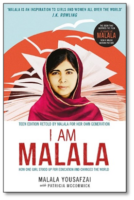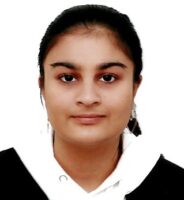Last Updated on September 23, 2022 by themigrationnews

Introduction
I Am Malala: How One Girl Stood Up For Education And Changed The World takes us through the life of Malala Yousafzai. Yousafzai tells a very inspiring story focused on her life since the Taliban took over her home region – Swat, Pakistan. As a result, she stood up and began to use her voice from an incredibly early age to fight for children’s, specifically women’s right to education, which the Taliban was against. Since the publishing of this book, Yousafzai has been recognised as an international symbol of peaceful protest and is the youngest ever winner of the Nobel Peace Prize.
Summary of the Book
Yousafzai’s book can be said to have braked new ground as it was one of the first of its kind to be written. The book emphasised the refugee experience. In effect, the book also sheds light on the Pakistani experience, which often gets excluded by scholars who find it more interesting to focus on the refugees that have risen from major civil wars/crises such as the 2015 Syrian Civil War and its Refugee Crisis. Yousafzai tells her story by beginning with what life was like before the Taliban took over her region. This is followed by how things started to change once the Taliban took over. The core of the book lies in how she used her voice against the Taliban to fight for the right to education. However, on 9 October 2012, at the mere age of fifteen, she almost paid the price for speaking up as two Taliban associates entered her school bus, and she was shot point-blank with no expectation of survival. As a result, the book shows Yousufzai’s journey from Swat – a remote valley in Northern Pakistan – which is now uprooted by global terrorism to her recovery from the shootings in England and how that led her to the halls of the United Nations in New York.
‘Before the Taliban’, ‘A Shadow Over Our Valley’ & ‘Finding my Voice’
Yousafzai has organised the structure of her book through thirty-six chapters split across five parts. The first part, ‘Before the Taliban,’ contains five chapters that show the free day-to-day life that Yousafzai used to live. These chapters detail Yousafzai’s family, upbringing, and how a little girl values education. She also enjoys listening in on her father’s political conversations rather than helping her mum in the kitchen when they have guests over. This part also gives insight into the differences between Pakistani school girls and Pakistani school boys. The second part,’ A Shadow Over Our Valley,’ also contains five chapters, and these chapters begin to detail how the Taliban is slowly moving towards their valley, and this all started with the creation of Radio Mullah. The Radio radiated from people’s fear caused by the 2005 earthquake and talked about how everyone should adopt the more extreme forms of Islam such as sharia and purdah. These chapters also show how Yousafzai continues to attend school despite the Radio calling these behaviours and ideas unIslamic. The first two parts ultimately show how Yousafzai’s family supports and encourages her to follow her dreams.
The third part, ‘Finding my Voice,’ includes nine chapters that detail how Malala began her fight for education. The Taliban have now grown in power and are constantly bombing schools, targeting those who oppose them, along with publicly flogging and killing those who break their rules. It shows how her family is dealing with the Pakistani army and the Taliban fighting against one another in their region. As a result, Yousafzai is given the opportunity to write blogs for the BBC under a pseudonym, give media interviews, and feature in New York Times documentary about life under the Taliban. This is also the first time where the refugee/migrant experience is shown as the increased armed conflicts cause Yousafzai and her family to leave their home and become internally displaced persons. Yet, with her father, she continues to fight for education and to bring about social change, where she is nominated for the International Children’s Peace Prize and given opportunities to speak at various conferences.
‘Targeted’ & ‘A New Life’
The fourth part, ‘Targeted,’ includes four chapters that reflect how Yousafzai and her father have become part of the Taliban’s Kill List. These chapters detail how Yousafzai had been travelling around Pakistan to fight for education which caused her studies to slip. The Taliban’s ideology was still prevalent within the region, and this was shown with increased schools shutting down. This resulted in Yousafzai being more than confident in wanting to pursue a role in politics so that she could empower younger children and let them have the education they deserved. However, these instances led to Yousafzai experiencing a fatal experience when she takes the school bus home after an exam, and that bus is stopped by men in white robes asking who she is and then shot with everything going black, so she remembers nothing from that day.
The fifth and final part, ‘A New Life, Far From Home,’ includes thirteen chapters and picks up one week after her near-death experience. It shows how she awakens in a hospital in Birmingham, England, with no memory of the incident and has trouble communicating and understanding where she is and how she got there. Regardless of her condition, she is constantly worried about her family since they are not here with her. Eventually, her family joins her, and her road to recovery begins. She learns that the Taliban had ordered her attack and will try to kill her if she returns to Pakistan. She also receives an enormous amount of support from people around the world who are praying for her and sending her gifts to wish her a speedy recovery. These chapters show how her family is adapting to their new life in England. They detail how they all miss Pakistan terribly but are thankful to be alive. The strong connection to refugees can be seen here as she faces the fear of persecution in her home country, so she cannot go back even if she wants to. Yousafzai ends her book by saying how she will continue to work towards universal peace and educational rights.
What methodology does Yousufzai follow?
Throughout the process of writing this book, Yousafzai worked closely with Patricia McCormick and Christina Lamb. The teen/young readers edition of this book written by Yousafzai and McCormick is extensively based on the reporting and research that Lamb undertook when working with Yousafzai to tell Yousafzai’s story in the 2013 book I Am Malala: The Girl Who Stood Up for Education and Was Shot by the Taliban. The initial work by Lamb has led Yousafzai to write more books, including these younger readers edition and three children’s picture books. This edition includes additional material from the 2013 book in the form of a map of Pakistan, a glossary, and a timeline of notable events in Pakistan from its creation in 1947 to the release of the film He Named Me Malala in 2015. The book also includes two sections of photographs in the middle of the book, which support the various parts of the book. This is because the first section of photographs focuses on Malala’s upbringing and life before the Taliban. The second section of photographs focuses on life since the Taliban, including the bombings of schools, her hospitalisation, and some things she has accomplished since then.
Since this is the teen/young readers edition, they are the intended audience of this book. The audience is essentially Yousafzai’s own generation, so ideally, those in the twelve to eighteen age range. The audience is definitely kept intrigued throughout the book as the chapters are worded in ways that make the book an easy read and can be finished in one sitting. This edition provides a brief introduction to Yousafzai’s life. It can also be viewed as a stepping-stone for people who want to learn more about Malala Yousafzai’s (refugee) experience as she has a fully edited full adult version where she goes into more details and aspects of her life.
Conclusion
In conclusion, Yousafzai highlights a refugee experience that is uprooted by trauma and how such traumatic experiences cause people to forget significant details/moments of their life. The memoir definitely empowers and inspires people with all the things that they can achieve in their lives. This shorter edition enables readers to hear about Yousafzai’s background and, upon completion, makes readers want to read her fully edited autobiography so they can continue to learn more about Yousafzai’s life. Therefore, Malala Yousafzai’s story is worth reading.

Himani Chauhan is an International Relations & History graduate and is currently pursuing a Masters of Migration Studies from Victoria University of Wellington (New Zealand). She comes from a family of immigrants which has shaped her experiences, views, and interests in wanting to further explore and work in this area of study. Her area of interest includes – Migration, History and Human Rights.
